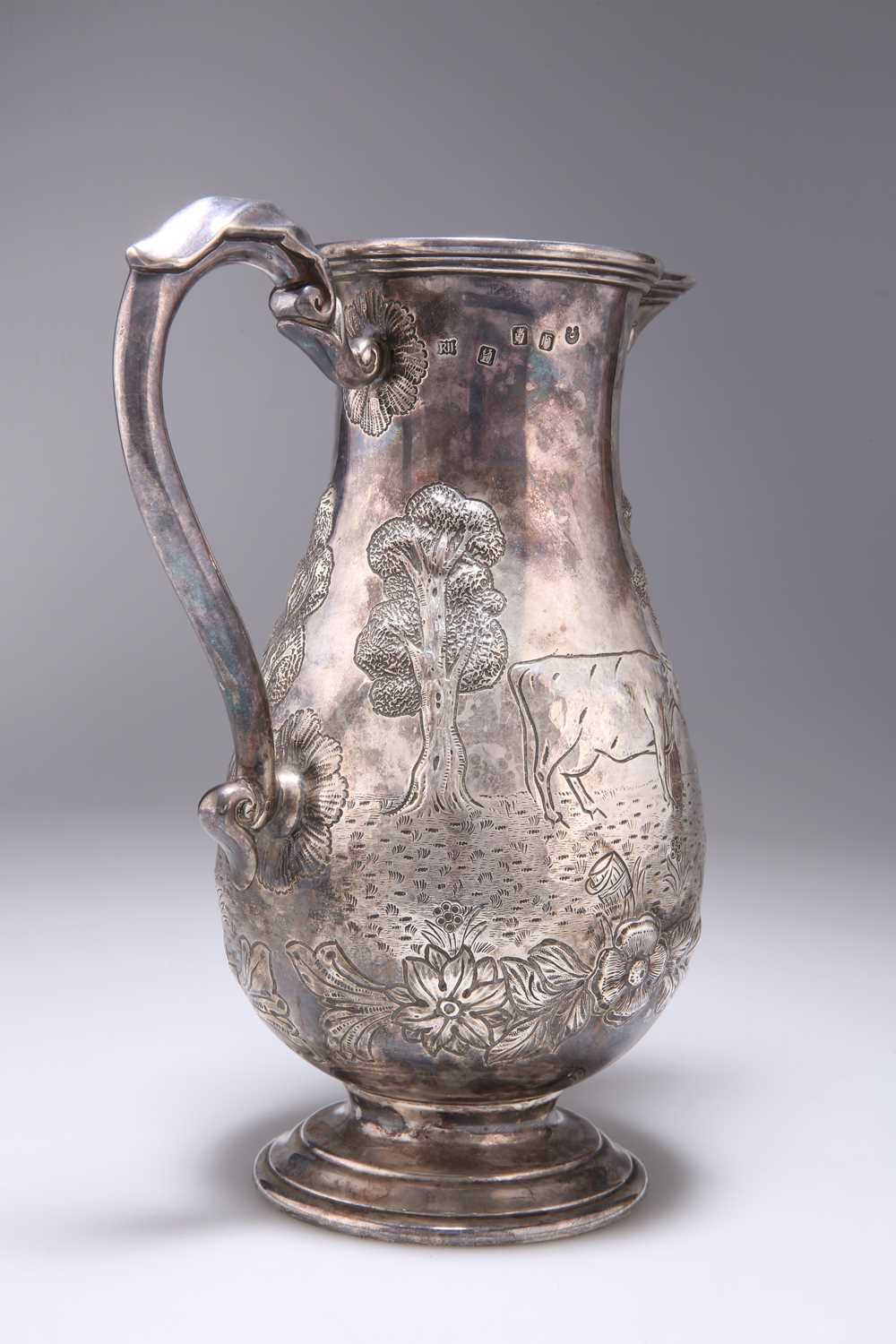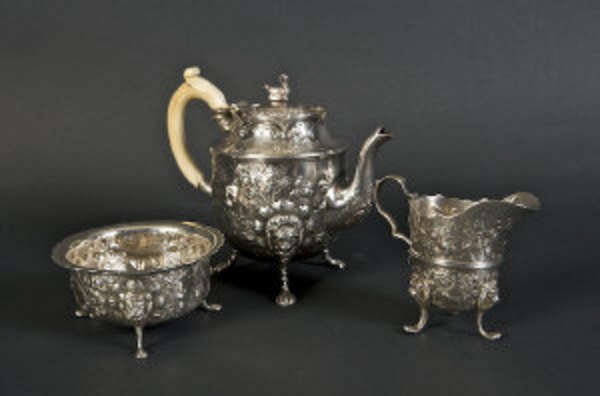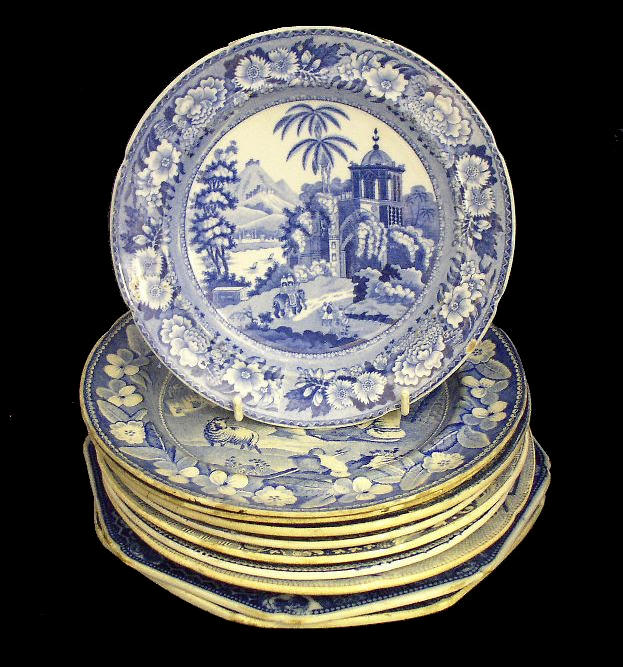AN IRISH MILKMAID Irish School, circa 1840-60s
Signature: portion of an inscription upper left: "Stuart / Collage / Bank / Park" Medium: watercolour over pencil Dimensions: 48 by 34cm., 19 by 13.5in. This watercolour with its close attention to detail shows a woman apparently standing by the roadside in typical Irish countrywoman’s dress. Her overskirt is tucked up around her waist with her blue a... and white apron tucked into the front. Farming women habitually went barefoot except for special occasions, and the colourful fringed woollen shawl was typical of those spun and woven in the thatched houses that can be seen in the background. She is probably a milkmaid, and she wears a ‘head ring’ over her scarf, which was sometimes of twisted straw or a roll of fabric, enabling her to balance her load comfortably on her head. The staved vessel that she balances like a caryatid on her head is tapered towards the top, to prevent the liquid spilling as she walks. Coopers made a variety of staved barrels and containers like this, usually with wooden hoops rather than these metal ones. The tap at the front allows her to fill the tankards for her customers, without even having to remove the butt or can from her head. Eighteenth century images of women selling ‘new milk’ or ‘sweet whey’ in Dublin show that such liquid refreshment was carefully measured for sale, and formed an important element of the Irish diet.1 Sweet whey was the watery substance that remained after making curds from milk, and the curds were spooned out and given to children. She would milk her cows in the morning and the evening as well as preparing the whey for sale. During the 1840s the writer Mrs Hall describes the numerous women who travelled the roads selling their wares, and whose “custom of carrying burthens [sic] upon their heads makes them remarkably erect”.2 The subject matter and assured realistic style of this watercolour is reminiscent of visiting English genre painters such as Francis W. Topham (1808-77) or Alfred D. Fripp RWS (1822-95), who together visited Ireland before and after the famine of the 1840s.3 Dr Claudia Kinmont more
AN IRISH MILKMAID Irish School, circa 1840-60s
Signature: portion of an inscription upper left: "Stuart / Collage / Bank / Park" Medium: watercolour over pencil Dimensions: 48 by 34cm., 19 by 13.5in. This watercolour with its close attention to detail shows a woman apparently standing by the roadside in typical Irish countrywoman’s dress. Her overskirt is tucked up around her waist with her blue a... and white apron tucked into the front. Farming women habitually went barefoot except for special occasions, and the colourful fringed woollen shawl was typical of those spun and woven in the thatched houses that can be seen in the background. She is probably a milkmaid, and she wears a ‘head ring’ over her scarf, which was sometimes of twisted straw or a roll of fabric, enabling her to balance her load comfortably on her head. The staved vessel that she balances like a caryatid on her head is tapered towards the top, to prevent the liquid spilling as she walks. Coopers made a variety of staved barrels and containers like this, usually with wooden hoops rather than these metal ones. The tap at the front allows her to fill the tankards for her customers, without even having to remove the butt or can from her head. Eighteenth century images of women selling ‘new milk’ or ‘sweet whey’ in Dublin show that such liquid refreshment was carefully measured for sale, and formed an important element of the Irish diet.1 Sweet whey was the watery substance that remained after making curds from milk, and the curds were spooned out and given to children. She would milk her cows in the morning and the evening as well as preparing the whey for sale. During the 1840s the writer Mrs Hall describes the numerous women who travelled the roads selling their wares, and whose “custom of carrying burthens [sic] upon their heads makes them remarkably erect”.2 The subject matter and assured realistic style of this watercolour is reminiscent of visiting English genre painters such as Francis W. Topham (1808-77) or Alfred D. Fripp RWS (1822-95), who together visited Ireland before and after the famine of the 1840s.3 Dr Claudia Kinmont more










Testen Sie LotSearch und seine Premium-Features 7 Tage - ohne Kosten!
Lassen Sie sich automatisch über neue Objekte in kommenden Auktionen benachrichtigen.
Suchauftrag anlegen